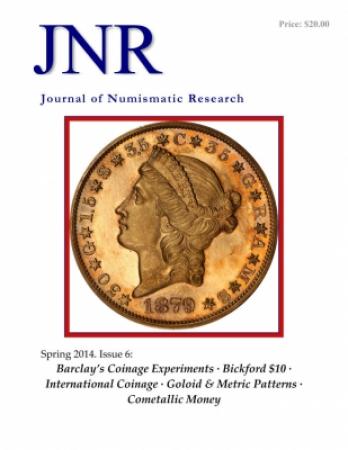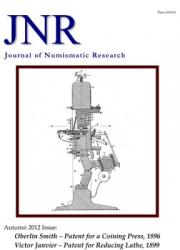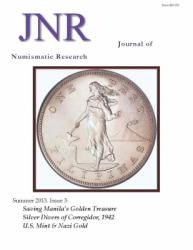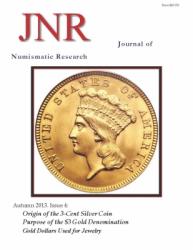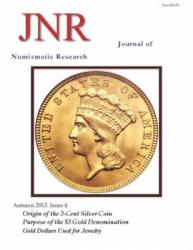DOWNLOAD: Journal of Numismatic Research -- Issue 6 -- Spring 2014 (Barclay's Coinage Experiments)
Purchase
Description
Most Americans of the nineteenth century thought of coins and currency in two practical ways: a concern that their pieces of coin or paper currency would be accepted by merchants for purchases and a wish to have more.
For those few involved in economic policy and politics, other, more esoteric aspects of coinage were of concern. The three main subjects were prevention of adulteration or counterfeiting, direct equivalence of international gold coins, and use of metric weight for coins. Underlying each of these were certain economic assumptions and profit opportunities that pushed governments toward decisions.
Adulteration and counterfeiting were of concern to all because bad coins meant that merchants and banks would reject the money a person offered in payment. In this regard, it must be remembered that gold coins were simply convenient tokens representing a certain weight of pure gold. Banks and merchants could, and occasionally did, reject legitimate gold coins because they appeared heavily worn or were lighter than official standards. This was the focus of James T. Barclay and his obsession with preventing degradation of the national coinage. The first article in this issue, Dr. Barclay's Experimental Coinage ~ 1841 - 1876, delves into Barclay's experiments at the Philadelphia Mint and explains who this enigmatic experimenter was and what he accomplished. The second article, Prevention of A Fraud Upon Our Gold Coins, examines the claims before and after Barclay's experiments that his ideas were not original and had little influence on the Mint.
Businessman Dana Bickford, alternatively, was concerned with the ability of travelers to easily know the value of their American money in certain European currencies. His idea for a gold international coin was not intended as a standard of value, as it was an equivalency calculator. His ideal changes were of design, not content. The third article in this issue, International Coinage, introduces collectors to the purpose and outcomes of multiple international conferences that took place from the 1860s to the 1880s with the purpose of rationalizing financial coinage. The fourth article, Bickford-Dunning International Exchange Value Coin, then delves further into Bickford's concept and the $10 gold pattern coin he designed and promoted with significant support from George Dunning.
Silver producers of the 1870s wanted to stop the decline in silver value compared to gold. Others wanted a bimetallic standard so that gold and silver would circulate equally. Backers of standard international coinage wanted to follow principles of the Latin Monetary Union and have the gold coins of all major nations exactly equal one another. Further, many idealists across the world wanted all coin weights expressed in grams of pure gold or silver and coin diameters and weights to be whole numbers. The fifth article, Louis Garnett, Wheeler Hubbell, and the Goloid Fiasco, explores Hubbell's proposal for a new bimetallic coinage alloy and U.S. coins of metric weight. While these patterns are some of the most common and popular pieces today, at the time the effort was expensive, disruptive and completely useless. The last article, The Cometallic Money Plan, explains how, on the other hand, Nicholas Veeder wanted not an alloy but a mechanical union of the two metals which he, but few others, saw as a financial utopia.


 Coin Price Guides
Coin Price Guides


